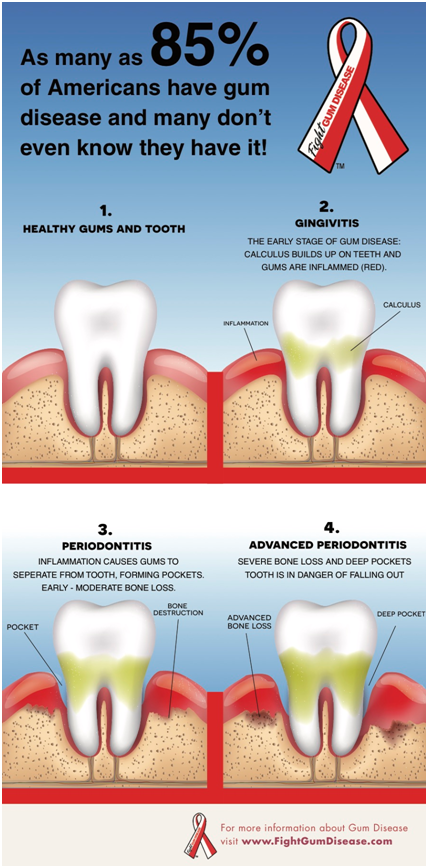Tens of millions of Americans have it. Odds are you do, too. We’re talking about Gum Disease and we want to educate people on the serious and widespread nature of this condition in honor of the 5th Anniversary of Gum Disease Awareness Month.
Gum disease is more common than most people know. It outnumbers the cases of cancer, heart disease and even arthritis. However, the clear majority of people are neither aware of its prevalence nor the consequences it can have on your overall health if left untreated.
For example, are you aware that Gum Disease…
…affects 85% of adults in the U.S.?
…is the leading cause of tooth loss?
…can be referred to as the “Silent Killer?”
…has links to other serious conditions that include some forms of cancer, diabetes, heart disease, and strokes?
Because of these alarming facts—and the alarming number of people affected—the Institute for Advanced Laser Dentistry (IALD) started Gum Disease Awareness month to raise awareness about gum disease. The IALD is a non-profit educational and research entity dedicated to helping people prevent this treatable disease from taking hold of their lives by educating on the risks and consequences of untreated gum disease.
The IALD trains dentists in a specific minimally invasive laser gum disease surgery, and has professional members nationwide and around the world who spread the word about gum disease. 49 states that now recognize February as Gum Disease Awareness Month- helping support our goal that successful gum disease treatment is a reality for people nationwide and across the globe
The Basics of Gum Disease
Gum disease results from infection that attacks the tissues and bones supporting your teeth, causing your gums to swell, turn red, and even bleed.

There are two types of gum disease: Gingivitis and Periodontitis.
Gingivitis, a less severe form of the condition, results from plaque buildup. Plaque is a combination of germs and bacteria known as a biofilm that forms into calculus, commonly known as tartar, which is difficult to remove.
Periodontitis is a more serious form of gum disease. Calculus buildups reach below your gum line, causing the gums to separate from the teeth and supporting bone. The, periodontal pockets develop, causing swelling, bleeding, pain while chewing, and teeth looseness and misalignment. Sometimes sores develop inside the mouth. Many patients experience persistent bad breath, as well as tooth sensitivity. Another symptom could be Pyorrhea, which is a discharge of puss from the gums. Unless treated, periodontitis symptoms will worsen and your teeth could fall out.
The least expensive and painful way to deal with gum disease is Prevention. Maintain a regular cleaning schedule with your dentist and hygienist every six months. Regular brushing, flossing and dental hygiene visits are your best bet for avoiding dental infections.
But even diligent brushing and flossing may not be enough. Your dentist will check for the signs to help catch the gum disease in its early stages by probing the line between your gum and teeth to check for pockets. Numbers three and above indicate the presence of gum disease. The bigger the number, the more advanced the infection.
Eradicating the causes of the disease should factor into every successful treatment. The bacteria found in gum disease, Streptococcus sanguis, can spread to the heart, and play a role in strokes. When a patient does not have gum disease, there is significantly less of this bacteria in the heart.
Much work has been done to raise awareness of Gum Disease over the past five years. However, there is more to do. To learn more about Gum Disease and the related treatments, please explore the resources available here at FightGumDisease.com or at theIALD.com.
References
[1] “Gingivitis vs. Periodontitis.” Crest.com. Web. 15 April 2016.
[2] “Medical Terminology Word Pyrorrhea.” Easymedicalterminology.Blogspot.com. Web. 15 April 2016.

